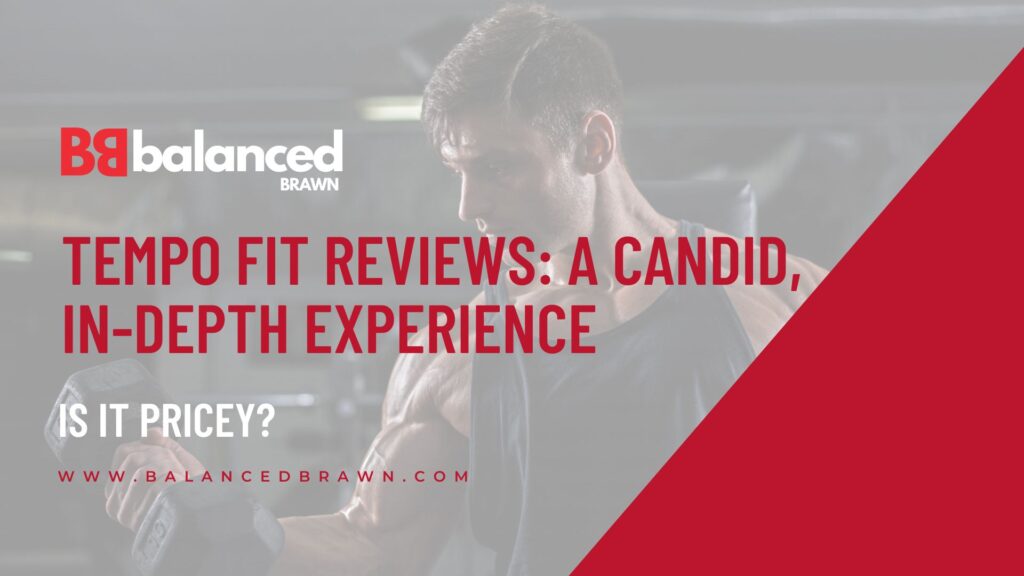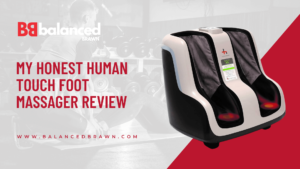When I first heard of “Tempo Fit,” I was intrigued. A compact, AI‑powered home gym promising real‑time form feedback and a boutique training experience—it sounded nearly too good to be true. After years of battling commute times, inconsistent gym hours, and paying for trainers I barely saw, I finally decided to try it—buying the full Tempo Studio and later adding the Move model for review. Over months of daily use and side‑by‑side comparisons with other systems (from Tonal to Mirror), I’ve tested how well Tempo lives up to its promise.
Here’s my brutally honest, no‑fluff review—what worked, what fell flat, and whether it’s worth your hard‑earned money.
Pros
- Aesthetically engaging—looks sleek, furniture-grade.
- Rich content offering and live classes.
- Leaderboards and readiness scoring boost accountability.
- Compact form of Move is ideal for small spaces.
Cons
- Form feedback is inconsistent and often misses nuance.
- Weight guidance is frequently inaccurate.
- Studio has connectivity and freezing issues.
- Setup and troubleshooting hassles cut into workout time.
- High cost of entry + subscription + return penalties.
Unboxing & Setup: Glamorous, with Early Warning Signs
Pulling the Tempo Studio into my home felt like unpacking the future. The 42″ touchscreen tower—sleek, sculptural—fit right into my living space without screaming “gym.” Everything arrives neatly stowed: dumbbells, plates, heart monitor, mat, roller. White‑glove delivery was impressive, and the initial setup felt straightforward.
But then came the first glitch: Wi‑Fi connection woes. A few sessions in, the unit frequently dropped off my network or froze mid‑workout. The external adapter they sent sometimes helped—but often didn’t. For a high‑end device, this was infuriating. A smart home gym shouldn’t turn your workout into a tech support session.
On the Move side, setup was smoother—just a cabinet, phone dock, and some weights. Compact and attractive, it fit beautifully into my smaller office without overpowering the space. Setup was quick, but pairing it correctly with the TV and ensuring stable streaming still required patience.
Design & Aesthetics: Built for Stylish Homes
Hands down, Tempo nails aesthetics. The Studio looks like a designer armoire—and yours even when it’s turned off. Weight plates are color‑coated, matte, and pleasant to use. The Move? A chic cabinet that rivals modern furniture. My spouse even said it “elevates the room.”
These are not just tools—they’re statements. If you care about how gym equipment blends into your home rather than dominates it, Tempo does it masterfully.
Feature Breakdown: What It Promises vs. What It Delivers
Real-Time Form Feedback & AI Tracking
Tempo’s biggest sell: AI that watches your form via 3D cameras (Studio) or iPhone (Move), counts reps, and nudges you to adjust. In theory, that’s brilliant. But in practice? I found feedback infrequent and sometimes inaccurate. It’ll catch blatant issues—like leaning forward excessively—but misses subtler nuances. Rep counts were decent but occasionally dropped, especially in tight spaces or with push‑ups.
Weight Recommendations
The system tries to suggest the right weight during warm‑ups. Sometimes it’s spot‑on—but more often it’s off by noticeable margins (10+ lb in some cases). It doesn’t inspire confidence in relying blindly on its math.
Class Variety & Programming
Tempo delivers an expansive library: strength, HIIT, yoga, mobility, core sessions—plus live classes. The new “goal‑based programs” adapt to your journey, and after integration with Apple Health or wearables, it gives readiness scores and tailored suggestions. When it works? It’s seamless and motivating. On days when it glitches? You’re left navigating menus or skipping workouts.
Community & Leaderboards
Live classes include a leaderboard, which adds that much‑needed competitive edge for me. Seeing your rank in real time can push you harder when motivation lags.
The Workout Experience: A Love-Hate Relationship
When It Works
On good days, the Studio or Move delivers a solid, immersive training experience. The screen’s responsiveness, the class variety, and the instant rep tally—paired with body‑aware instruction—feel undeniably potent. Programs adapt intelligently when you’re pushing or holding back. I’ve had weeks of improved consistency and effort-level tracking that I would’ve otherwise ignored.
When It Doesn’t
But the inconsistencies sting. Wi‑Fi freezes mid-session—class lost. Weight adjustment time is tight—if the AI recommends a different load last second, good luck changing on the fly. On Move, occasionally syncing the phone to the TV fails, forcing repeated retries. On bad days, you waste more time troubleshooting than sweating.
Costs & Commitment: Prep Your Wallet
Tempo Studio Bundle Pricing
- Starter: ~$2,495
- Plus: ~$3,245
- Pro: ~$3,995
All with optional financing (e.g., ~$139–199/month over 12 months).
Tempo Move Pricing
- Regular: ~$495 (discounts sometimes ~395)
- Plus/Pro include additional weights, barbell, mat, etc.
Subscription
- $39/month for app access, live and on‑demand classes, up to 6 profiles. Standard across both hardware lines.
Hidden Costs
- Returns on Studio can cost $500–$600 including shipping and restocking. Warranty voids if you move or resell.
This is not an impulse buy. Between upfront cost, monthly commitment, and risk of hardware problems, you must be sure you’ll use it routinely—or the ROI collapses.
Who Should Consider Tempo Fit?
If you:
- Value a beautiful, home-friendly design,
- Need someone—or something—to keep you accountable and engaged,
- Crave a guided strength training structure,
- And will actually use it consistently despite minor frustrations—then Tempo offers a unique and premium experience.
But if you:
- Want rock-solid AI with perfect tracking,
- Hate tech complications,
- Are on a tight budget or fear buyer’s remorse—then it may be wiser to wait for a future generation or explore less committal options.
Alternatives I’ve Tried
I’ve spent years with Tonal, Mirror, and various app-based programs. Tonal offers precise digital weight and smoother tracking—but costs as much and lacks the same visual appeal. Mirror is sleek and affordable—but wooden-furniture vibes don’t pack the same workout punch. Tempo sits in a niche—beautiful, weighted, AI-enhanced—but with more bugs and more expense than I’d like.
Final Verdict: A Beautiful Frustration with Potential
“Tempo Fit Reviews” aren’t one-size-fits-all. Here’s how I’d break it down:
Tempo Fit delivers on style and motivates consistency like nothing I’ve used before. When it works, it becomes an embedded part of your fitness ritual—a smart mirror that coaches with personality and purpose. But when tech hiccups, you’ll stare at a frozen screen, your momentum tanked.
For committed users who plan to train regularly and can tolerate some friction, Tempo is a compelling premium choice. For others, it might be flash over function.
Tips for Prospective Buyers
- Test the free trial fully—don’t trust first-week impressions if Wi-Fi or form tracking glitches appear later.
- Plan your workout space—ensure solid internet and power access to reduce setup issues.
- Start with Studio Starter or Move Plus—avoid overspending early.
- Have backup workouts—so a freeze doesn’t kill your routine.
- Track your use—if you hit low-usage weeks, reassess the value vs. cost.







